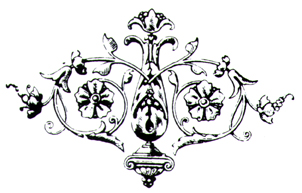
[INTRODUCTION]
Friar Gaspar da Cruz would have been born in Evora, precisely when is unknown, and later, at a time also unable to be pin pointed, he was admitted into the Convent of the Dominican Order at Azeitão, near Lisbon. He set off for the Orient in 1548 as part of a group of Dominican missionaries and dedicated himself to apostolical work on the coast of Hindustan for about six years. In 1554 he went across to Macao, founding a residence for his Order and he stayed on in the city until September of the following year when he boarded a ship belonging to Portuguese merchants heading for the Kingdom of Cambodia. This tireless missionary settled in Cambodian territory for about a year and travelled a little around the kingdom. However, in December of 1556 he was already on the Chinese coast having luckily managed to obtain permission to visit Guangzhou• where he stayed for about a month.
In spite of his eventual missionary projects becoming completely ineffectual, Gaspar da Cruz did not waste his time and seems to have taken advantage of that short stay on the Chinese coast to the full. He travelled around the entire city by foot looking at the streets, houses and temples, exchanging impressions with the native people from all walks of life, frequently visiting the mandarins' court sessions, taking account of customs and habits, documenting the cultural and religious practices and ultimately gathering together valuable information about the most diverse aspects of Chinese life. At the same time, the Dominican Friar interviewed Portuguese settlers well versed in Chinese affairs, "[...] people one could trust [...]," as he himself said, even managing to obtain a copy of "[...] a compendium of a nobleman who was held captive and taken inland [...]."Gaspar da Cruz was referring to Galiote Pereira's Treatise Algumas Coisas sabidas da China [...] (Certain Reports of China [...]), a one-time prisoner who reached Shangchuan Dao ·as the end of 1552, or the beginning of 1553, after having spent several years in Chinese prisons (See: Text 8 — Galiote Pereira). At the beginning of 1557 he set off again and after a stopover in Malacca [presently Melaka], began a circumnavigation of Indonesia before returning to the Hindustani coast almost three months later. He even went through Ormuz before embarking in Goa to head back to Portugal.
Years later in February 1570, two weeks before the death of Gaspar da Cruz, the printer, André de Burgos, published the famous Tratado das Cousas da China [...] (Treatise in which Things of China are related at great length [...]), which was the first monograph solely devoted to the Middle Kingdom to be given the honour of being published in Europe. The choice of printer seems to suggest that the missionary, after having returned from the Orient, considered setting one up in the monastery of the Dominican Order in Evora. From that point on the Dominican Friar began the exhausting task of compiling material on China which had been collected by the Portuguese up until then. In a marvellous way Gaspar da Cruz' Tratado [...] (Treatise [...]) systemised the accounts, images and experiences resulting from the long and not always peaceful history of Portuguese experiences living in a Chinese world. Nevertheless this work not only distinguish itself for its wealth of content, for the detailed information and the variety of sources incorporated, but for how the Tratado[...] (Treatise [...]) was coloured by an attitude of ardent admiration for Chinese ways from beginning to end. Throughout its many pages the Portuguese missionary's praise was almost without bounds, the efficiency of The Chinese's forms of governing, their impartiality in justice and exemplorary punishments, their respect for authority, their extraordinary dexterity which developed the most unexpected solutions to problems in daily life, the charity and benevolence of aid institutions, their ordered bustle in the cities, their meticulous organisation of the production system, etc. All in all China is presented to the readers of this work as a real social model, worthy of the greatest admiration and interest which was only overshadowed by the fact that the Chinese lived in "[...] ignorance of the truth [... totally apart from the...] faith of Christ."

* First edition: Evora, 1569/1570.
start p. 95
end p.